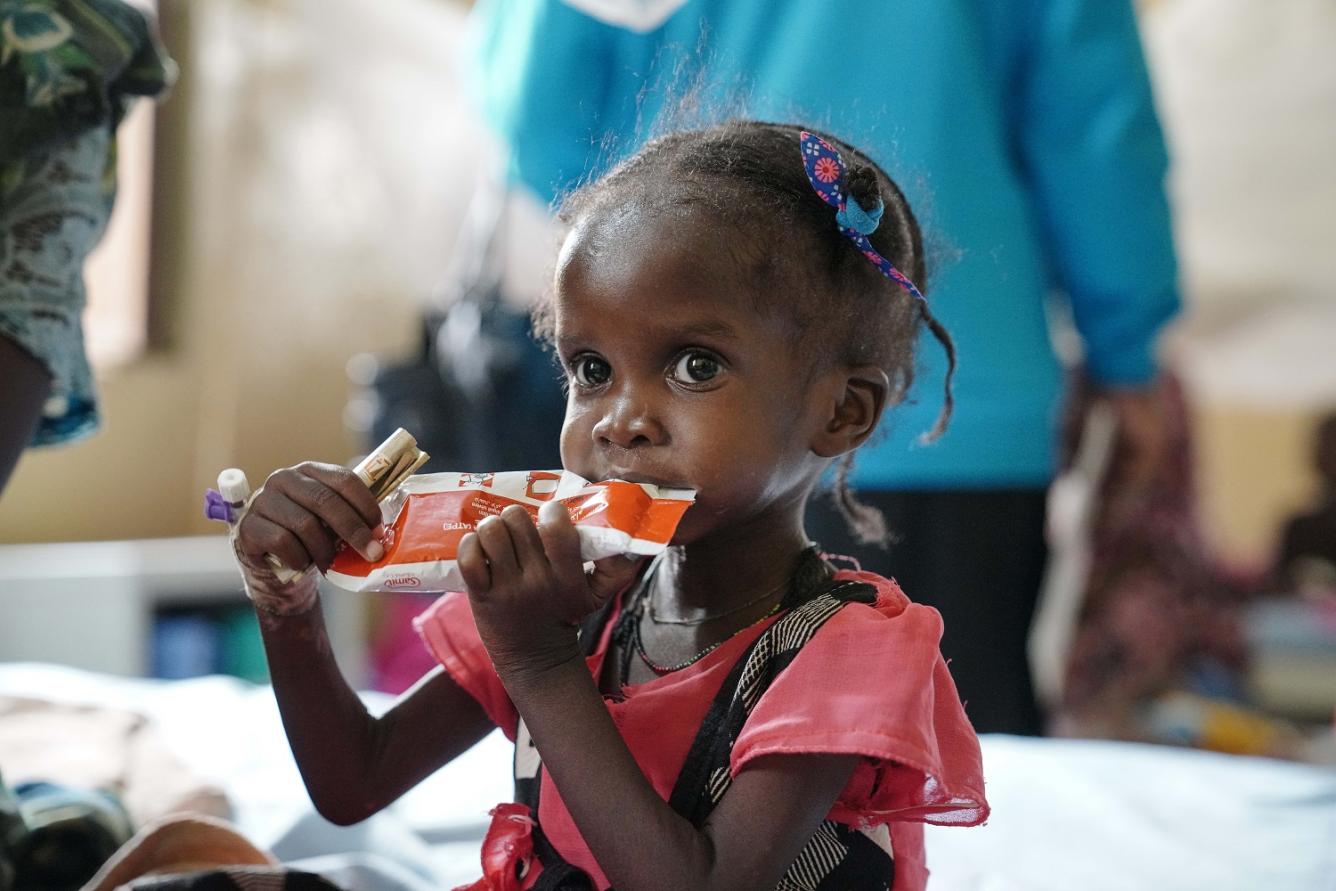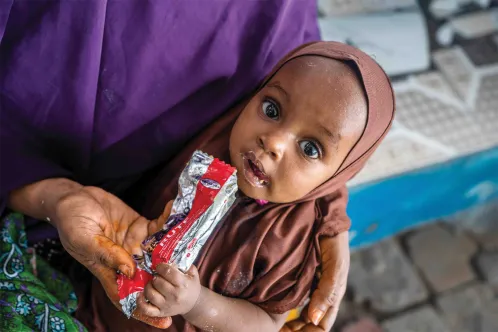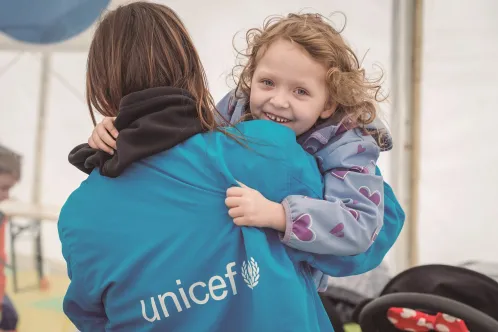UNICEF’S Work to Prevent and Treat Childhood Malnutrition
UNICEF works to prevent all forms of malnutrition by improving children’s and mothers’ access to nutritious, safe, affordable and sustainable diets. We collaborate with local governments, partners and communities to help ensure every child gets the nutrition they need to reach their full potential.
WHAT IS MALNUTRITION?
Well-nourished children are better able to learn, grow, play and participate in their communities. They are also more resilient in the face of a crisis.
But many children, especially in low- and middle-income countries, are experiencing malnutrition: a condition resulting from eating a diet lacking in nutrients. Malnutrition can damage a child's growth and development, and greatly affect their school performance and opportunities in life.
Rising poverty, the climate crisis and health epidemics are increasingly preventing children from getting proper nutrition. At least one in three children under five is undernourished (stunted, wasted or both) or overweight, and at least half experience micro-nutrient deficiency, also known as hidden hunger.
In many countries, and even within households, these three forms of malnutrition (undernutrition, hidden hunger and overweight) co-exist in what is known as the triple burden of malnutrition. This burden is only expected to grow and threatens children’s survival, growth and development.
Malnutrition is on the rise
At least 1 in 3 children is not growing well because of malnutrition
At least 1 in 2 children suffers from deficiencies in essential micronutrients
At least 2 in 3 children are not fed the minimum diet they need to grow healthily
HOW UNICEF IS PREVENTING MALNUTRITION IN CHILDREN
UNICEF’s nutrition programs aim to prevent maternal and child malnutrition in all its forms. We have nutrition programs in 130 countries that work to improve maternal and child nutrition at key moments in life.
We support quality nutrition, health, water and sanitation and social protection services that keep children well-nourished. We also promote positive feeding, hygiene and care practices for children, adolescents and women.
When efforts to prevent malnutrition fail, we focus on the early detection, treatment and care of children with wasting and other life-threatening forms of malnutrition, to help them survive and recover.
In most cases, children with severe wasting, also known as severe acute malnutrition, can only be treated with ready-to-use therapeutic food (RUTF): packets of high-protein and nutrient-rich food that a sick child can eat and digest easier than regular food.

UNICEF provides about 80% of the world's therapeutic food, which has helped treat millions of children at risk of severe wasting.
We also work alongside other United Nations organizations, most notably the World Food Programme (which provides emergency food assistance) and the Food and Agriculture Organization (which leads international efforts to defeat hunger), to support countries facing high levels of undernutrition and food insecurity.
In 2023, thanks to your support:
- 210 million children accessed services for the early detection and treatment of child wasting;
- 9.3 million children were reached with life-saving treatment for severe wasting;
- 6 million children were reached with severe wasting treatment in the 15 most acutely affected countries through the No Time to Waste Acceleration Plan.
Let's make sure every child gets a healthy start in life
UNICEF’S MALNUTRITION PREVENTION EFFORTS
WE ENSURE PREGNANT AND BREASTFEEDING WOMEN HAVE HEALTHY DIETS AND SUFFICIENT CARE
In many parts of the world, many women are not receiving the nutrition and services they need to give their babies the best chance to survive, grow and develop healthily. UNICEF is working to increase access to nutritious food and essential nutrition services for women before, during and after pregnancy.
WE ARE IMPROVING CHILDREN’S FOOD AND FEEDING PRACTICES
Children need the right food at the right time to grow and develop properly. UNICEF is preventing malnutrition in infants and young children by promoting and supporting breastfeeding, providing micronutrient supplementation and promoting healthy food environments. For example, we have been working with our partners to reduce the number of children at risk of iodine deficiency disorders, by implementing salt iodization projects to increase access to iodized salt.
WE HELP CHILDREN AND ADOLESCENTS FORM POSITIVE LIFELONG EATING HABITS
Many school-age children and adolescents don't have diets that prepare them for long, healthy and productive lives. UNICEF aims to improve nutrition education and teach positive eating habits to help children and young people achieve their full potential.
DEFINITIONS
WHAT IS UNDERNUTRITION?
WHAT IS STUNTING?
WHAT IS WASTING?
WHAT IS SEVERE ACUTE MALNUTRITION?
Severe acute malnutrition, also known as severe wasting, is the most visible and lethal type of malnutrition. Lacking nutritious food in their diet, children with severe acute malnutrition have compromised immunity, increasing their vulnerability to serious symptoms of diseases like acute watery diarrhea, measles and malaria.
WHAT IS OVERWEIGHT?
Overweight occurs when a child’s weight is too high for their height. Children affected by overweight are at an increased risk of obesity, behavioural and emotional problems, including low self-esteem and mental health issues including depression. Overweight affects 38.9 million children under age five.
WHAT IS HIDDEN HUNGER?
WHAT IS RUTF?
RUTF is the acronym for Ready-to-Use Therapeutic Food. It is a high-protein and nutrient-rich food that has helped treat millions of children threatened by severe wasting. UNICEF procures different types of RUTF including Plumpy'Nut®, which is a peanut-based paste, as well as therapeutic milk, and even a fish-based product introduced in Cambodia with the help of UNICEF Canada donors. Learn More



